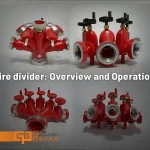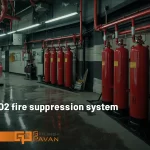In the domain of fire safety, the synergy between firefighting techniques and the incorporation of elevators as a pivotal component in emergency response tactics within structures holds paramount significance. Acquaintance with salient points concerning firefighting and elevator systems is imperative to facilitate the prompt and secure evacuation of occupants in the event of a fire. This discourse delves into fundamental considerations, protocols, and technological facets that oversee the efficient integration of firefighting endeavors with elevator functionalities. It scrutinizes the pivotal role played by this interaction in augmenting the comprehensive safety measures of buildings.
The accident is unpredictable and fire can happen at any time. It doesn’t matter where you are or what you’re doing, and different situations call for different actions. The elevator is one of the building equipment that must be thought about before and during the fire and necessary measures should be taken. Therefore, in this article from Ganjineh Pavan’s blog, we discuss the key points related to fire fighting and elevators.
Elevator in fire conditions
In general, a properly maintained elevator is very safe; Even safer than climbing stairs. But during a fire, this can be reversed.
Regarding fire extinguishing and elevators, it should be remembered that in some buildings, the fire alarm system causes the elevators to stop at a safe floor and remain locked until the alarm is stopped. This safety feature is relatively new; Therefore, it does not apply to all elevators.
Fire damage to the elevator power source can cause it to stop suddenly between floors. If the fire has penetrated the elevator shaft, anyone trapped in the elevator will be at risk of exposure to extreme heat and smoke. In this situation, it will be very difficult to save people.
A standard building has high resistance to heat. For this reason, only truly hellish temperatures affect the structure of a building. Therefore, cable failures and elevator shaft collapse, while possible, are not immediate hazards.
If your workplace has an elevator, your company’s fire safety plan should include details on how to use the elevator in an emergency to make sure you and your team know what to do in the event of an emergency. So, let’s review some basic fire and elevator emergency safety tips.
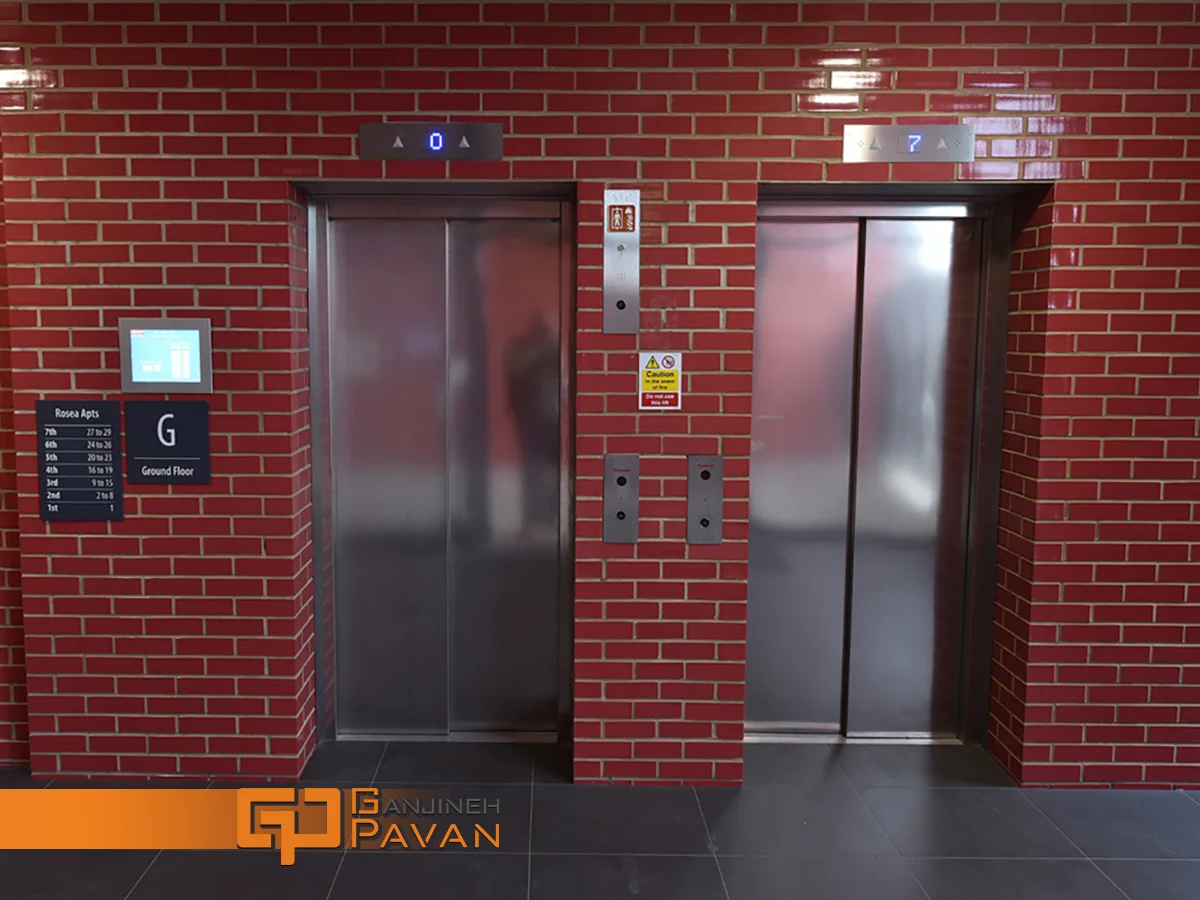
Non-usual use of the elevator in fire conditions
We all know not to use the elevator during a fire emergency, but do you know why? There are many reasons to stay away from an elevator during a fire, but the main reasons are:
A fire can knock out the power system and cause you to get stuck between floors.
An elevator shaft acts like a chimney and can quickly fill with smoke, putting you at risk of smoke inhalation.
If you’re stuck in an elevator during a fire emergency, firefighters understandably have to prioritize rescuing you over putting out the fire.
In the event of a fire emergency, leave the elevators for use by emergency personnel so that they can quickly and efficiently resolve the situation.
If you are stuck in an elevator car during a fire, stay calm and press the emergency button or call for help. Never try to open the doors or open the escape hatch. Wait for emergency personnel to rescue you.
Proper maintenance of elevators for fire safety
One of the most important measures to be taken, especially regarding fire safety and fire extinguishing and elevators, is the regular inspection and maintenance of all elevators in the building. The responsibility of setting up these services rests with the building manager or owner.
Whether you use your in-house maintenance team or outsource it to an outside company, you need to perform periodic inspections and servicing.
The need to carry out an elevator fire risk assessment
This is also the responsibility of the building owner or management and can be performed by your company’s on-site maintenance team or a professional elevator maintenance contractor.
Risk assessment allows you to identify and fix any defects related to fire extinguishing and elevators. These assessments should also include appropriate procedures for potential situations where people are trapped in an elevator.
Appropriate fire extinguishing and elevator equipment
Any person designated as the safety officer must have access to all personal protective equipment and other tools and information related to the safety and fire extinguishing system.
Access keys to the elevator engine room should be readily available to authorized personnel, as well as keys to open the elevator doors and a release mechanism to release the brake.
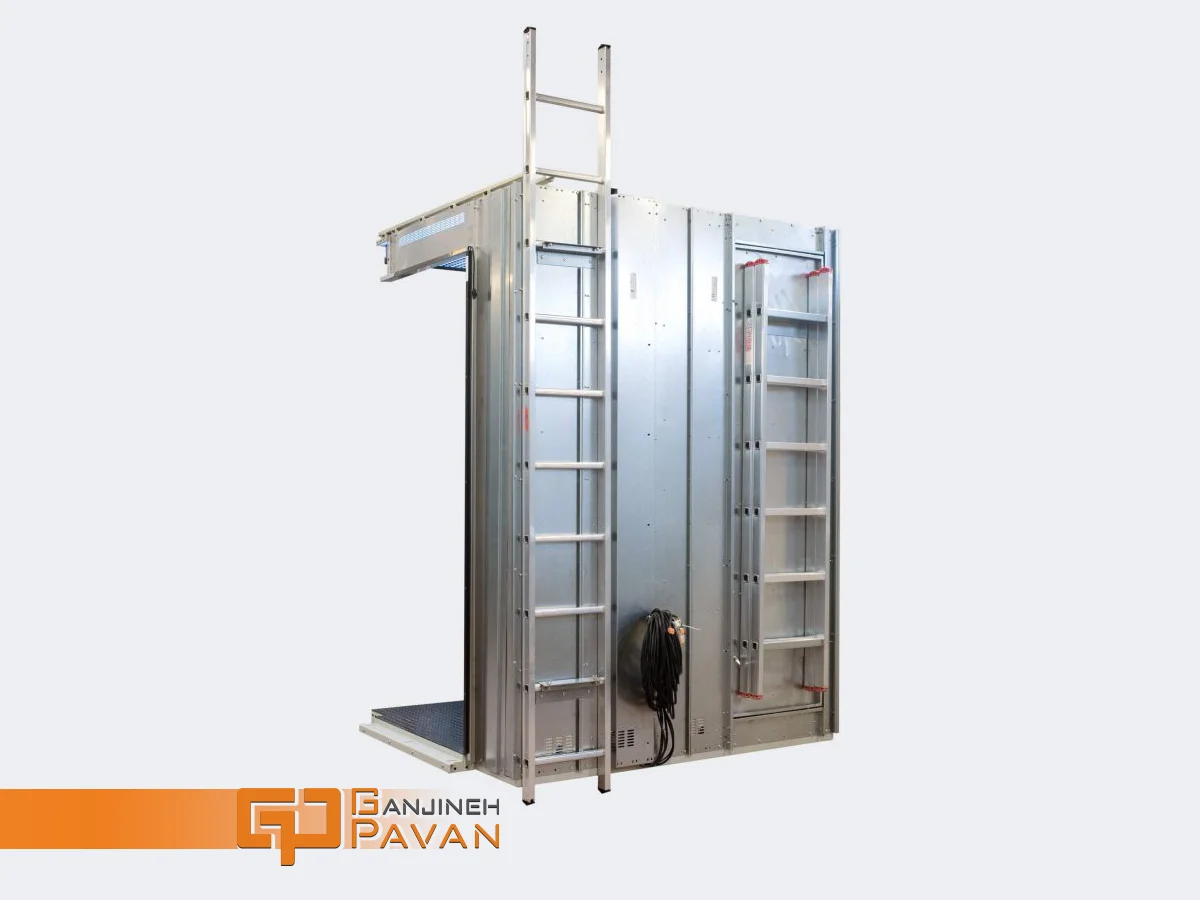
The necessity of fire fighting and elevator safety training
In addition to the specific people responsible for safety, all employees must be fully informed and prepared about the procedures that exist in the event of a fire and fire fighting and elevators. By doing this, you can avoid confusion and panic, which are the leading causes of death in emergencies.
Instructions for what to do in an emergency should be posted in the elevator to ensure everyone knows what to do in the event of a problem.
Elevator fire extinguishing service phases
Elevators are generally equipped with fire service modes that enable firefighters to continue using the elevator during a fire to extinguish a building fire. Fire service mode has two stages:
Phase 1
Concerning fire suppression and elevators, Phase 1 automatically starts when the elevator’s smoke or heat sensors go off and sends the elevator to the first floor (or another floor if smoke or fire is detected on the first floor). The doors open and allow passengers to exit. The elevator then stops answering service calls, so it can be available when firefighters arrive.
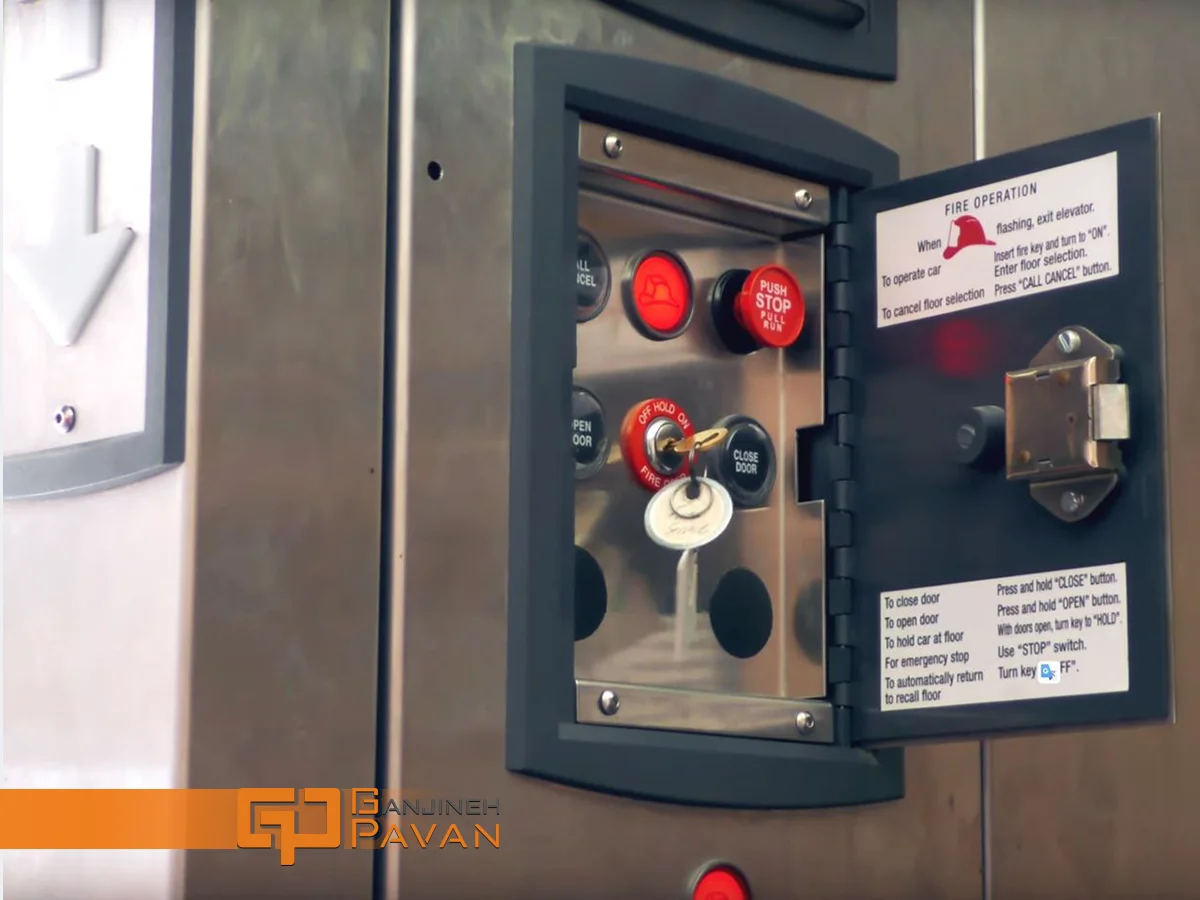
Phase 2
Phase 2 begins with firefighters arriving at the scene. This phase is activated by a switch on the control panel inside the elevator. All new elevators accept a universal elevator key that every firefighter has.
This key enables emergency personnel to manually control the elevator. So that they can move from one floor to another if needed and allows them. To evacuate the building quickly and put out the fire.
Fire extinguisher and fire access elevator
The elevator is installed to transport people. But it is equipped with additional protective control systems, communications, and signals. To enable its use under the direct control of the firefighting team. To be able to access the floors of the building in case of fire.
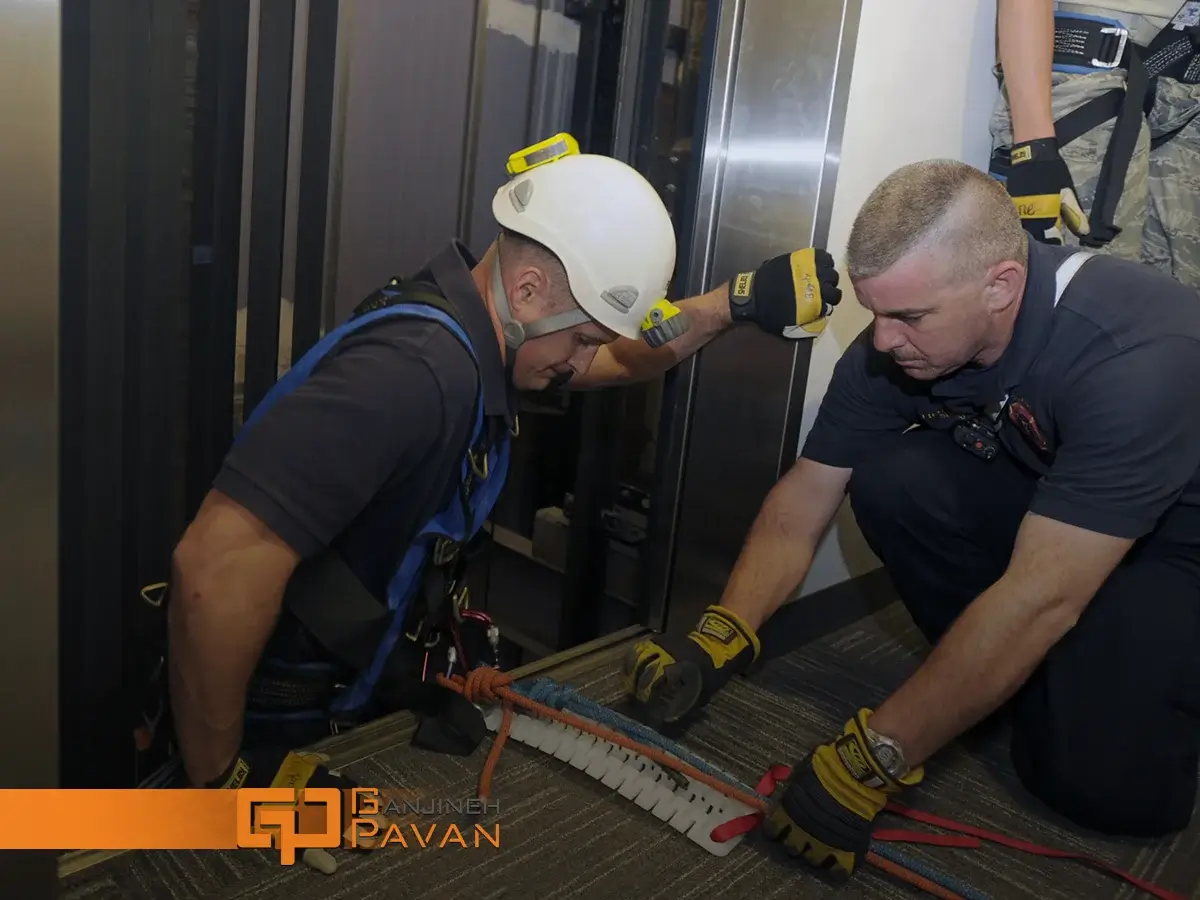
Firefighting elevator features
Interfacing between elevator control, fire detection, and alarm system
The need for doors and ladders for rescue operations
Electrical parts in the shaft and on the elevator must be protected against water and fire.
Emergency intercom system and elevator operation
Separate power supply (supplied by the manufacturer) to keep the elevator active in fire conditions
The last word
In this article, we discussed the key points related to fire fighting and elevators. Observance of these points will reduce possible injuries and losses to a minimum by increasing the safety of the elevator in fire conditions.
We at Ganjineh Pavan company provide consulting services and installation of fire alarm and extinguishing equipment for all kinds of industries and residential and commercial buildings.
If you would like to benefit from the services that have made us a leading independent company in the field of fire prevention, protection, and fire extinguishing, contact us now. We are happy to be with you to increase your safety and comfort.
Sources:



